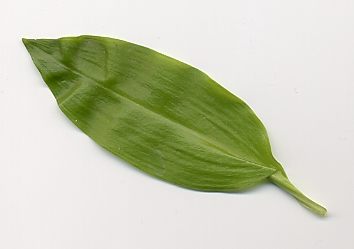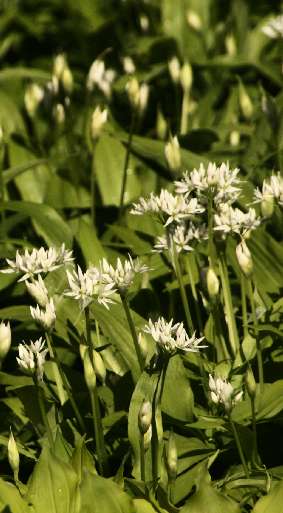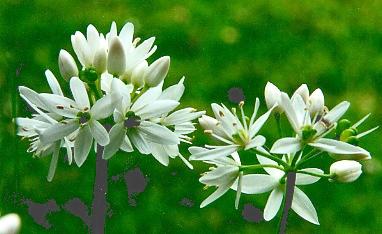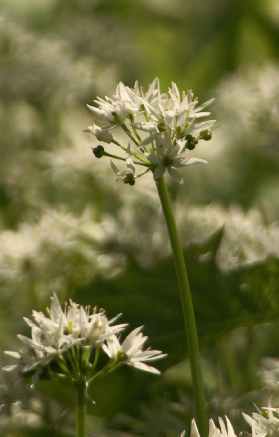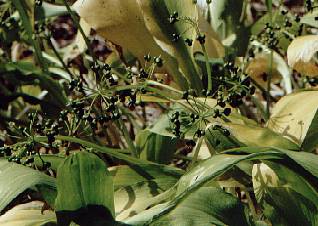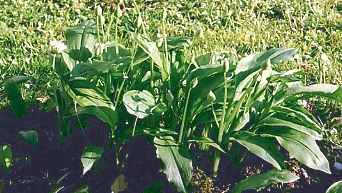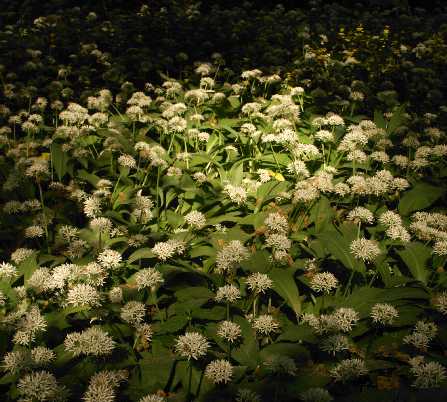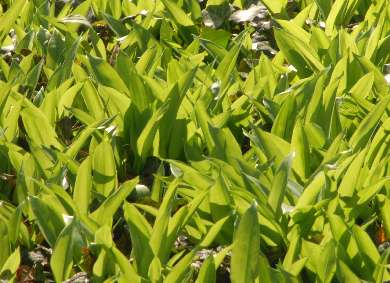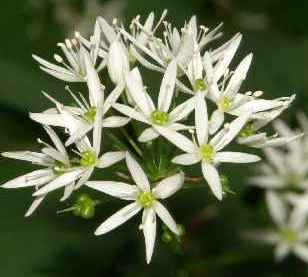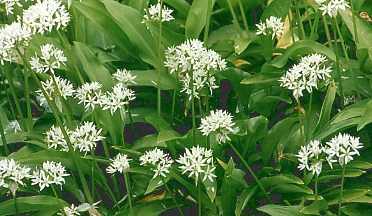
|
| Bear’s garlic, flowering plants |
In spring, the leaves are collected and used raw to flavour spreads based on cottage cheese, soups and sauces. Dried leaves usually exhibit a very faint odour and should, if ever, used in liberal amounts. On the other side, they are better preserved by preparing a pesto-like sauce (see basil) or simply by freezing.
In Germany, and probably other parts of Central Europe, bear’s garlic has
increased dramatically in popularity within the last few years; see also
rocket on other herbs that have become popular
lately. While bear’s garlic was formerly
known only to a few in eat-wild-plants-communities, today hardly any of
the haute-cuisine-chefs will miss the opportunity to create
new recipes using this herb and offer them to his guest during the all-too-short
season. Unfortunately, I find that many chefs mistreat bear’s garlic
significantly and use way too high temperatures when they prepare their
subtly flavoured crèmes, soups and pasta sauces. Ideally, bear’s
garlic should not be boiled or simmered at all, but rather used raw,
the fresh leaves just being mixed with the hot food and eaten immediately.
Otherwise, most of its characteristic flavour is wasted and perfumes the
kitchen air, not the food.
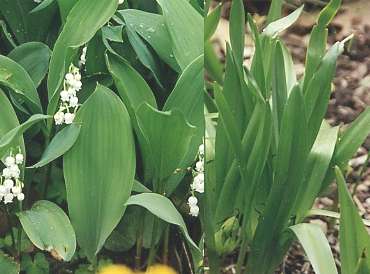
|
| Two plants you should never confuse with bear’s garlic: left lily-of-the-valley, right autumn crocus |
Since bear’s garlic has become so popular, many people have tried to
collect the plant in the wild. Several cases of poisoning have been
reported in recent years, as there are a few toxic plants with
roughly similar leaves, particularly lily of the valley (Convallaria majus, Convallariaceae/
Lily of the valley contains cardioactive glycosides with physiological
effects similar to digitalis, but their concentration in the leaves is
comparatively small, and, as a consequence, live-threatening conditions
due to poisoning occur but rarely. The situation is different with autumn
crocus: All plant parts are rich in colchicine, a highly toxic alkaloid.
Colchicine poisoning takes lethal course very often. Autumn crocus flowers
have also been confused with saffron flowers
by the inexperienced.
